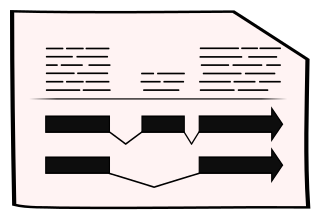Strongyloides ratti
BioProject PRJEB125 | Data Source Wellcome Sanger Institute | Taxonomy ID 34506
Genome Assembly & Annotation
Assembly
The reference genome was assembled by the Parasite Genomic group at the Wellcome Trust Sanger Institute, in collaboration with Mark Viney (University of Bristol), using a combination of capillary, 454 and Illumina paired-end sequence and genetic map data, and improved using bespoke manual and automated tools (WTSI Strongyloididae Nematode Genomes Project, Hunt et al. (2016)).
Annotation
The gene predictions were made by the Parasite Genomics group at the Wellcome Trust Sanger Institute as part of the Strongyloididae Nematode Genomes Project, Hunt et al. (2016). An in-house automatic pipeline (based around AUGUSTUS plus MAKER) was used to generate first-pass gene models, and this was followed by a round of targeted manual curation of selected gene families.
Downloads
Tools
Key Publications
- Nemetschke L, Eberhardt AG, Viney ME, Streit A. A genetic map of the animal-parasitic nematode Strongyloides ratti. Mol Biochem Parasitol, 2010;169(2):124-127
- Hunt VL, Tsai IJ, Coghlan A, Reid AJ, Holroyd N, Foth BJ, Tracey A, Cotton JA, Stanley EJ, Beasley H, Bennett HM, Brooks K, Harsha B, Kajitani R, Kulkarni A, Harbecke D, Nagayasu E, Nichol S, Ogura Y, Quail MA, Randle N, Xia D, Brattig NW, Soblik H, Ribeiro DM, Sanchez-Flores A, Hayashi T, Itoh T, Denver DR, Grant W, Stoltzfus JD, Lok JB, Murayama H, Wastling J, Streit A, Kikuchi T, Viney M, Berriman M. The genomic basis of parasitism in the Strongyloides clade of nematodes. Nat Genet, 2016;48(3):299-307
Navigation
Assembly Statistics
| Assembly | S_ratti_ED321_v5_0_4, GCA_001040885.1 |
| Database Version | WBPS18 |
| Genome Size | 43,166,851 |
| Data Source | Wellcome Sanger Institute |
| Annotation Version | 282 |
Gene counts
| Coding genes | 12,464 |
| Non coding genes | 509 |
| Small non coding genes | 509 |
| Gene transcripts | 13,070 |
Learn more about this widget in our help section
This widget has been derived from the assembly-stats code developed by the Lepbase project at the University of Edinburgh












